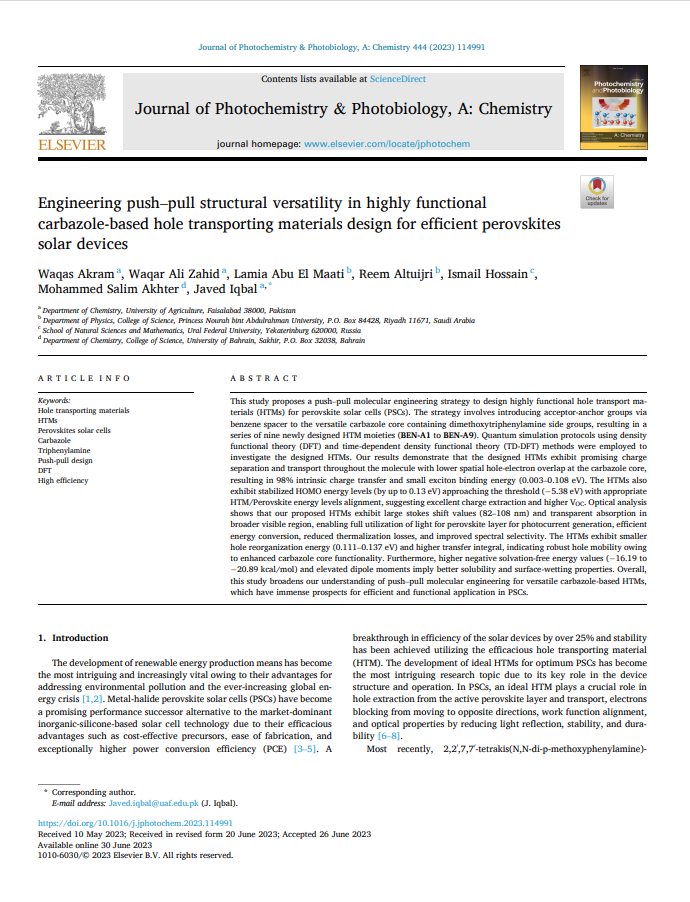Document
Chemical sensing ability of aminated graphdiyne (GDY-NH2) toward highly toxic organic volatile pollutants
Linked Agent
Jalal, Khadija Alsayed , Author
Ayub, Khurshid, Author
Gilani, Mazhar Amjad , Abridger
Mahmood, Tariq, Abridger
Title of Periodical
Computational and Theoretical Chemistry
Issue published
Volume 1222
Country of Publication
Netherlands
Place Published
Amsterdam
Publisher
Elsevier B.V.
Language
English
English Abstract
Abstract:
The detection of common environmental pollutants through chemical sensors has received significant interest from the scientific community. Acetamide (AM), benzamide (BM), thioacetamide (TAM), and thiobenzamide (TBM) are hazardous chemicals to humans and can cause many diseases including cancer, chronic liver damage, and acute skin irritations. Recently, functionalized 2D carbon-based materials have been used extensively as chemical sensors. Functionalization of these materials introduces adsorption sites which facilitates the interactions with the analytes. In this study, the sensing capability of the recently synthesized aminated graphdiyne
material (GDY-NH2) is explored towards AM, BM, TAM, and TBM via density functional theory (DFT) calculations. The results revealed that GDY-NH2 forms stable complexes with the considered analytes. The interaction energies are − 10.64, − 11.92, − 11.19, and − 13.28 kcal/mol for AM@GDY-NH2, BM@GDY-NH2, TAM@GDYNH2, and TBM@GDY-NH2, respectively. Quantum theory of atoms in molecules (QTAIM) and non-covalent interaction (NCI) analyses revealed that the interaction between GDY-NH2 and the analytes occurs mainly via weak non-covalent van der Waals forces. A decrease in the HOMO-LUMO energy gap after interaction corresponds to a change in conductivity of the material. Furthermore, to ensure that the analytes are properly released after the detection, the turnover time has been theoretically calculated.
Member of
Identifier
https://digitalrepository.uob.edu.bh/id/472cc139-966a-4dac-9281-1623096b3cc4
Same Subject





